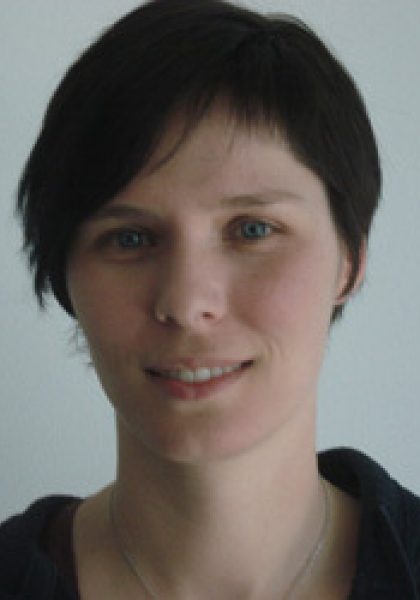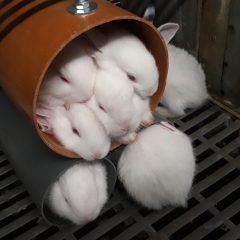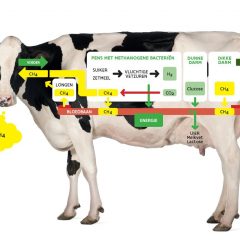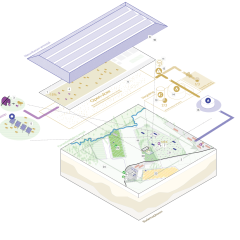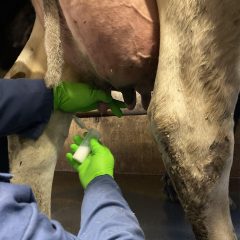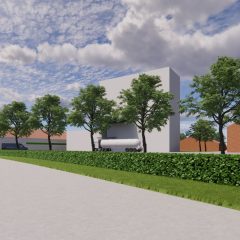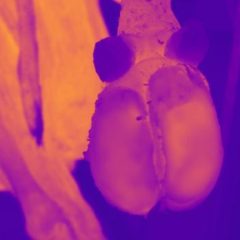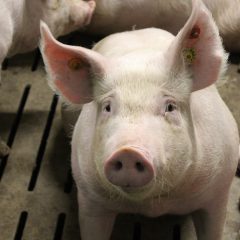Research project Voeder als oplossing voor de stikstofcrisis
Feed as solution for the nitrogen crisis: Development of a tool to monitor low-protein rations in dairy cattle

Main research question
Research has shown that there is a strong relationship between the crude protein (CP) content of the ration, and the excretion of urinary urea. This urea is the main source of ammonia (NH3) emissions from dairy farming. A 1% decrease in dietary CP content can reduce NH3 emissions by 10%. Low protein rations have potential as an NH3-reducing PAS measure. Moreover, they are relatively cheap and easy to apply, but currently difficult to monitor in practice. The objective of this project is to develop a simple, low-cost, reliable and accurate tool to monitor the RE content of rations on dairy farms. Verifiability is a necessary condition for low protein nutrition to be included in the list of recognised ammonia reduction measures for dairy cattle.
Research approach
The first objective of VoederPAS is to list all matrices and parameters that can contribute to estimating the crude protein (CP) content of rations. In the process, we examine the extent to which these parameters can be easily, cheaply and reliably analyzed today. Next, different combinations of parameters will be composed and scored in terms of feasibility, cost, reliability and accuracy, in order to provide an accurate estimate of the CP content of a ration. The 3 best scoring combinations will be tested on practical farms and in an animal trial at ILVO. After this practical test, the best scoring combination will be finally selected and implemented in the tool. The final objective is the implementation of the tool on at least 50 farms, with at least 20 farms using the tool to effectively get and/or keep the CP content of their rations below 16%, thus realising a NH3 reduction compared to the current situation.
Relevance/Valorization
In 2026, the short-term decline in NH3 emission from the dairy sector is evaluated. Dairy farmers urgently need profitable and effective measures to reduce NH3 emissions on the farm. Without this, the Flemish dairy herd will need to shrink. This project offers opportunities for the dairy farming sector to realise their NH3 reduction in an economic way. At the end of this project, the tool will be implemented on at least 50 Flemish dairy farms. Via extensive communication in popularized articles, seminars and workshops, the tool will also receive extensive attention after the end of the project. We expect that it will quickly find its way into the entire dairy farming sector.
Financing
VLAIO
